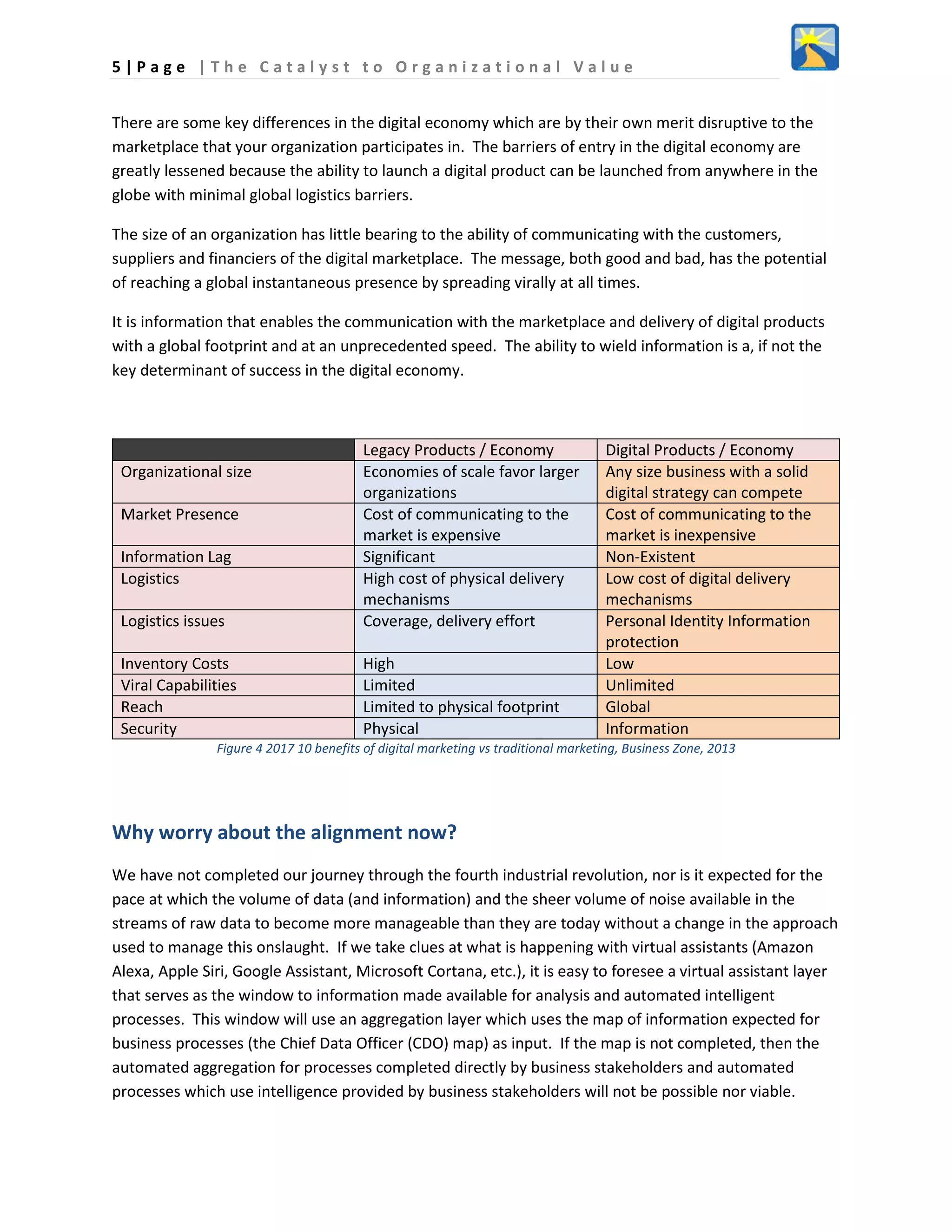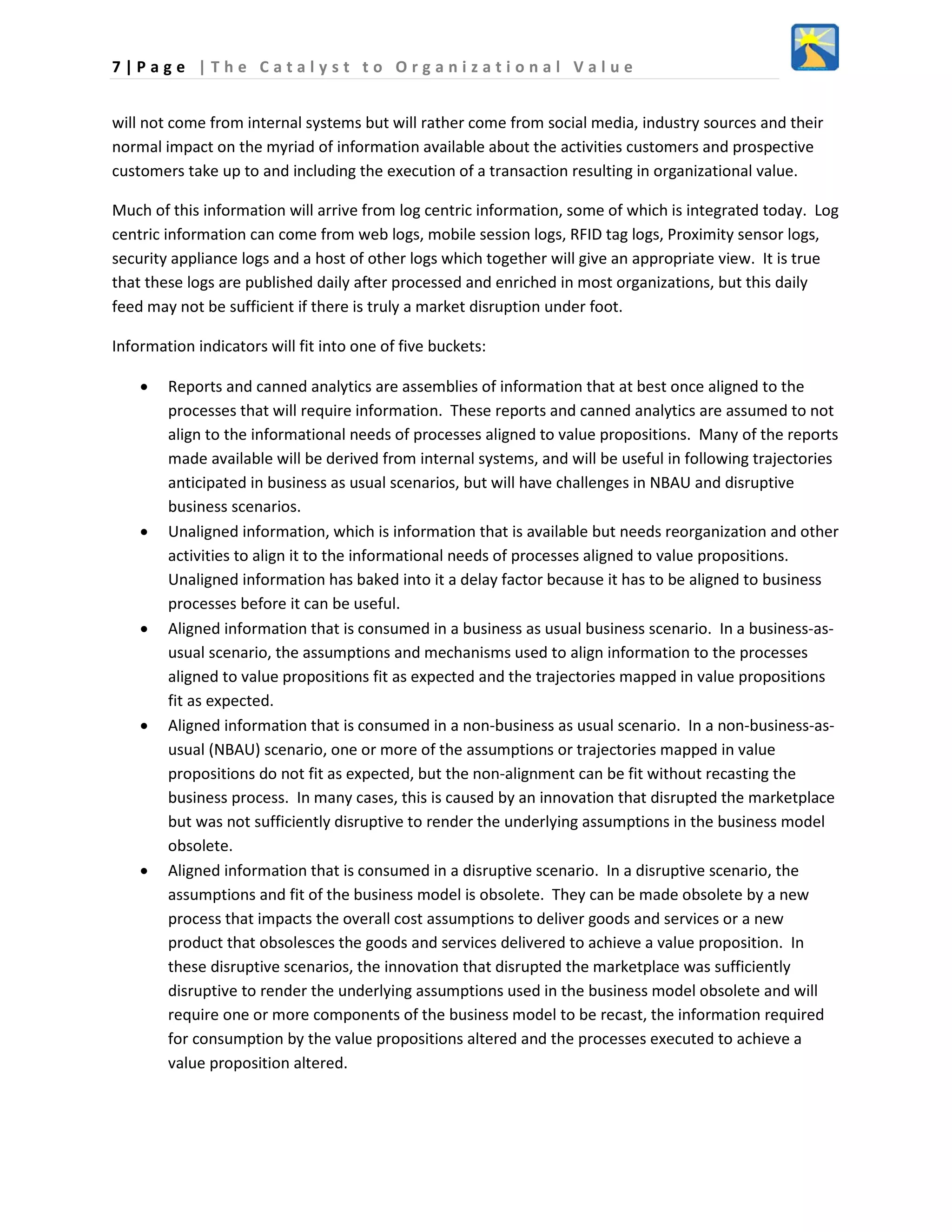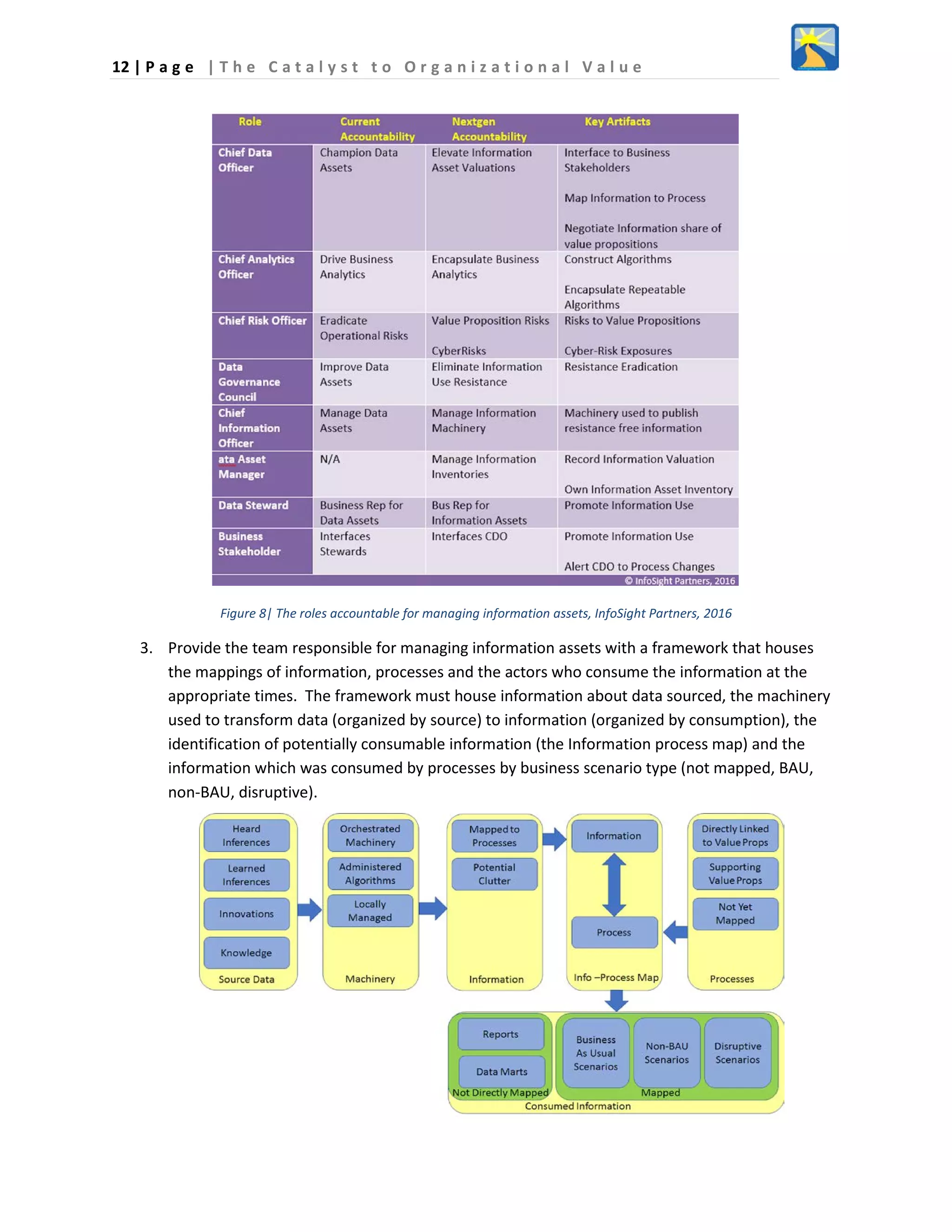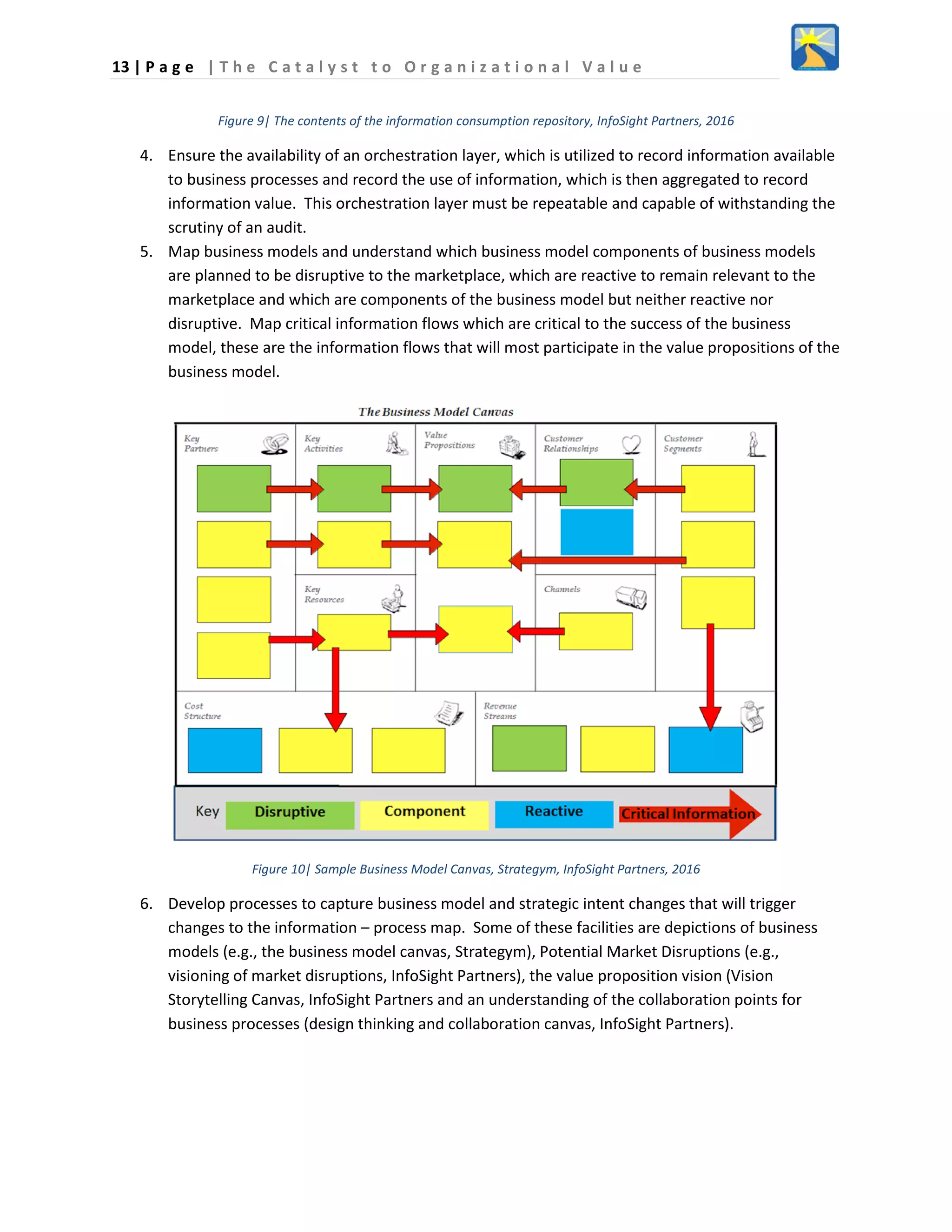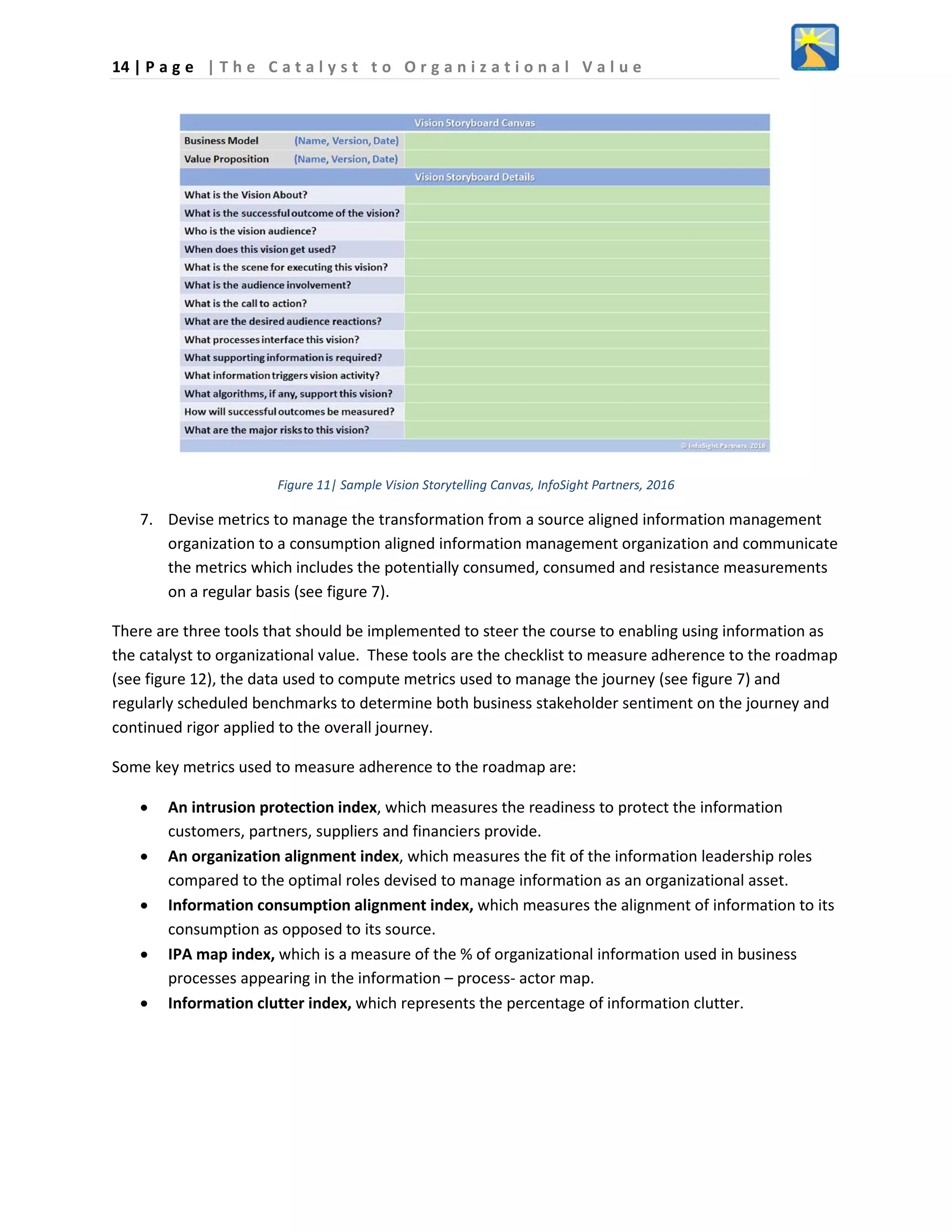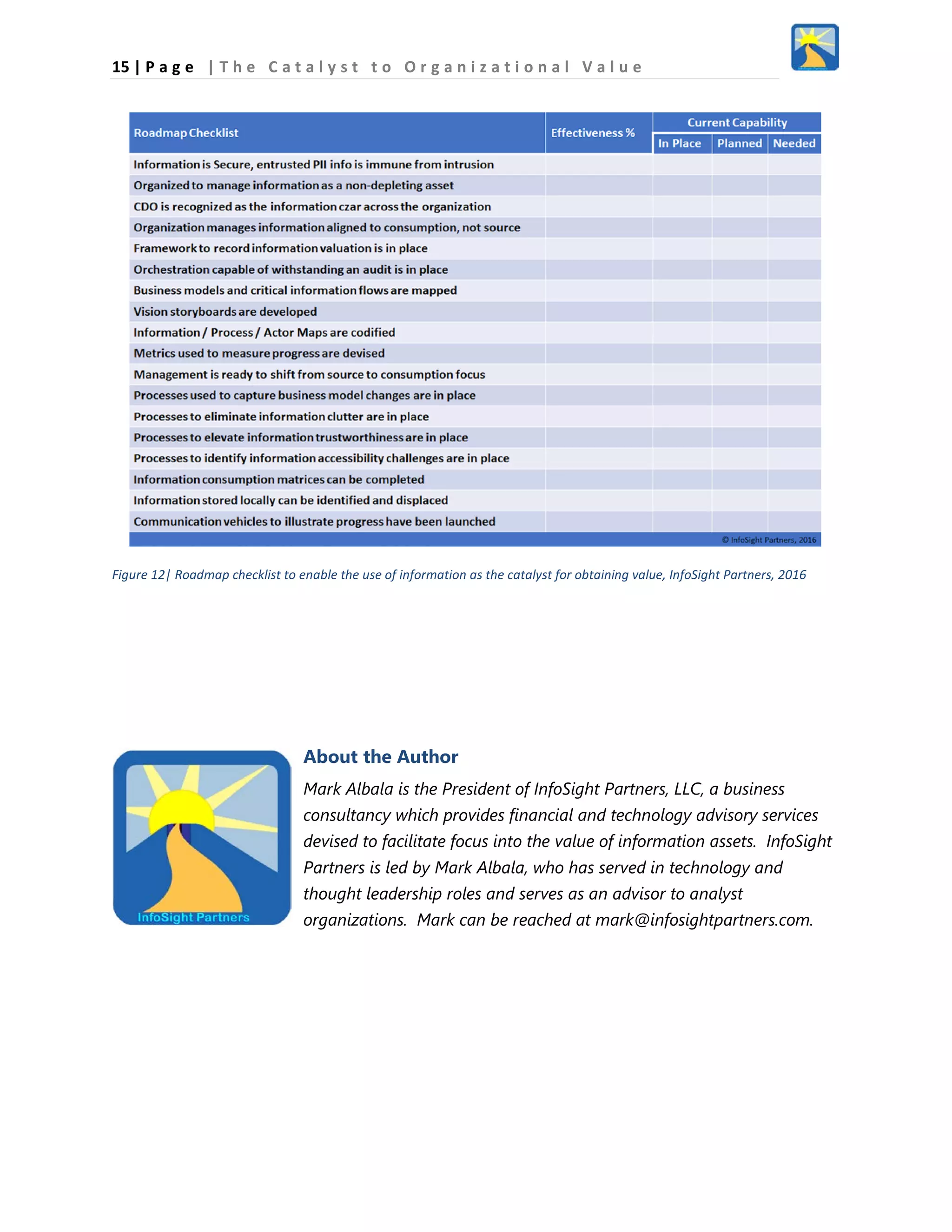As organizations navigate the volatile digital economy, managing information effectively becomes crucial for survival and value creation. The document outlines key strategies for leveraging information as a catalyst for organizational value, including developing information-based indicators, eradicating resistance to data use, and aligning information with business processes. It emphasizes the need for companies to adapt to the digital landscape by utilizing content wisely and being prepared for rapid market changes.




